What is the best way to score a hit with your educational marketing campaign? Should it focus on traditional media such as TV, mail, and print, go digital-only, or a mix of both? There’s a lot to be said for both traditional and digital marketing, so it makes sense to produce a campaign that runs across all platforms.
What is Multi-Media Marketing, and how Does it Work in an Educational Setting?
It’s a method of combining different types of media to reach audiences and build brand recognition. Some educational establishments that have been successful in the past using traditional media are often reluctant to change to multi-media marketing, but it’s the future of marketing strategy and is a useful tool to have in your marketing armory.
Nowadays, combining these different media approaches makes sense because not only are you reaching a wider audience of different age groups, you’re getting the chance to increase engagement. Print, TV, and radio combined with social media channels, email, and online videos are a useful way to reach not only parents but those thinking about which college or university they want to attend.
So what are the benefits of using a mix of media in your school, college, or university marketing? Let’s look at what the key advantages are of multi-media marketing:
- Increased reach: How a person prefers their media to be delivered is often a generational thing, and certain demographics tend to favour the media they use often and are familiar with. Baby Boomers and other older generations tend to prefer the more traditional print advertising – indeed, 76% of adults age 55 or older read newspapers. They also spend an average of 7.04 hours per week watching live TV, while younger age groups watch less – around 4.15 hours of live TV.
Millennials are used to receiving marketing on their mobile devices through soft advertising on social media and through hashtags, and they spend around 3.4 hours per week on social media. This makes the younger generations the most frequent users of social media of all age groups, and online videos are watched every day by around 66% of teens (13-19 year-olds). These diverse preferences mean that parents, grandparents, and those of school, college, and university age can all be reached through a mixed-media campaign.
- Target the right audience: Using different types of media allows you to direct your campaign to a specific demographic in order to gain the highest return. It’s never been easier for you to target different demographics, and internet marketing really comes into its own for this. Those in your target market may also surprise you by embracing media that you didn’t anticipate – and this gives you crucial information for your future campaigns. For instance, although print and TV are the most popular media for Baby Boomers, did you know that while more than 80% of Boomers read a newspaper most weeks, around half of those read a digital version, and more than one-third read a newspaper on their mobile phone?
- Make the most of what different media has to offer: In today’s turbulent times, the opportunity to create virtual online tours of your school, college, or university is invaluable – and still will be after coronavirus has gone. Statistics show that video is not a passing fad – 92% of marketers say that video is an important part of their marketing strategy – and that it’s the preferred way for people to engage with your school, college, or university. Social media engagement is formed through awareness building and relationships, and traditional media engages those who aren’t big internet or social media users.
- Create an echo effect for a better return on investment: A member of your target audience could notice your brand in a print advert, then be reminded of you on social media. Or, a social media user may see your ad, then recognise and remember your establishment when they see it in a print or TV advert.
- Use analytics to measure engagement: When you use different forms of media in your campaigns, you can run analytics for each type to gain key data on your audience – for instance, when and where are they interacting with the specific media, or the total engagement on a campaign. You can discover how successful each media was in boosting engagement, and you can discover which strategies work best with different media types.
- Cost-effectiveness: When you use it over the long term, multi-media marketing can be very cost-effective. This is because your campaigns can be targeted and measured to make them the most efficient and keep operating costs low.
- People like having a choice: If you give your potential audience the chance to choose how they interact with you over multiple channels, they appreciate it.
- Consistent branding creates more trust: Using multiple media channels means your message and image stay the same across all media platforms. This helps to grow recognition and also trust, which is a key feature of educational marketing.
- Fast-track your campaign: As the world gets ever-faster, the most effective campaigns are up-to-date with the latest trends and can be executed quickly. Multi-media approaches are more efficient, as they reduce the time needed to create and execute them – you can hit multiple platforms at once.
Technology has changed the world forever, and modern consumers have different expectations to the older generations. They also have their preferred way of doing things, which is one of the reasons why multi-media marketing is the right vehicle to deliver your core message.
